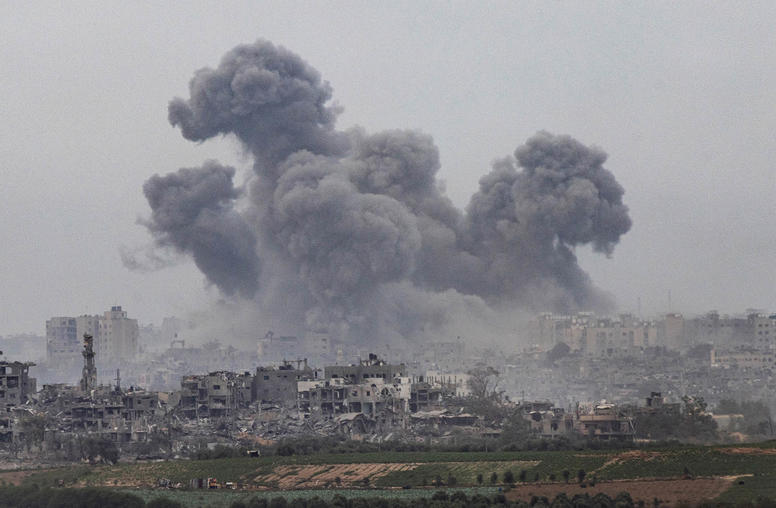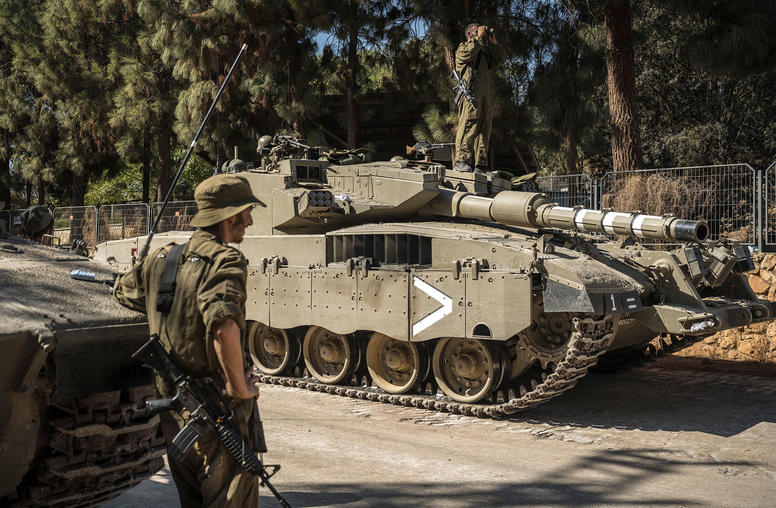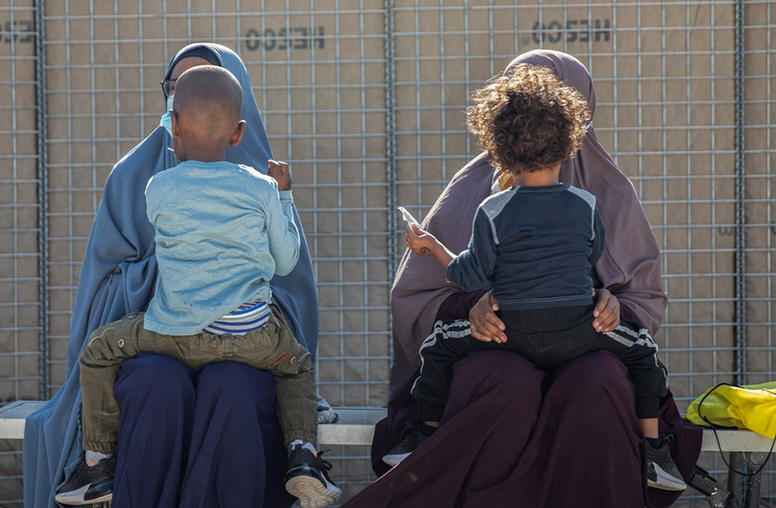Syria’s Uprising and the Path Ahead
Violence in Syria is escalating, but the country is not yet at the brink of civil war.
November 23, 2011
 Violence in Syria is escalating, but the country is not yet at the brink of civil war. This offers scant consolation, however. If civil war is not imminent, the Syrian uprising is nonetheless morphing into a low-scale insurgency with clear sectarian overtones. As this pattern takes hold, it erodes possibilities for a democratic, tolerant Syria to emerge in the uprising’s aftermath.
Violence in Syria is escalating, but the country is not yet at the brink of civil war. This offers scant consolation, however. If civil war is not imminent, the Syrian uprising is nonetheless morphing into a low-scale insurgency with clear sectarian overtones. As this pattern takes hold, it erodes possibilities for a democratic, tolerant Syria to emerge in the uprising’s aftermath.
Thus far, diplomatic pressure and economic sanctions have failed either to compel a change in regime behavior, or in the militarization of the uprising. With little appetite for military intervention among Western or regional governments, the only options available are to continue to ratchet up economic and political pressure on a defiant Assad regime, including the possible formation of “safe havens” within Syrian territory. Whether this approach will unfold quickly enough, or acquire sufficient impact, to force a shift in the dynamics of the uprising is far from certain. If it doesn’t, the most likely trajectory for Syria in the near term is continued regime violence, the further transformation of Syria’s uprising into a low-level insurgency, and the deepening of sectarian divisions.
- The civilian death toll is nearing 4,000 in Syria since the uprising began there earlier this year. What is the international community doing to pressure the Assad regime?
- What effect is the international pressure having on the Syrian regime?
- Has international pressure had any impact on the level of regime violence in Syria?
- What are the latest developments among the opposition and how do those developments portend the future?
- Is Syria headed for a civil war as has been suggested in the media?
- If not civil war, where are things headed?
- What does this all mean?
The civilian death toll is nearing 4,000 in Syria since the uprising began there earlier this year. What is the international community doing to pressure the Assad regime?
International pressure on the Syrian regime took a sharp uptick again this week. After voting to suspend Syria’s membership, the Arab League has rejected attempts by the Assad regime to renegotiate the terms under which League observers would be dispatched to Syria to monitor the regime’s compliance with the League’s demand that it cease its campaign of violence against its own population. Jordan’s King Abdullah called on Bashar al-Assad to resign. The European Union added the names of 18 additional individuals to its sanctions list.
In Paris, an international contact group established to coordinate Syria policy has secured Turkish and Arab support for the creation of two safe zones within Syrian territory, one under Turkish supervision in the north and the other under Jordanian supervision in the south. The establishment of these safe havens could mark a critical turning point in the Syrian uprising, creating the conditions for a “Benghazi scenario” to emerge in which opposition forces gain control over territory under international protection. The Assad regime understands all too well the threat of such a scenario, and can be expected to resist strenuously the creation of any such safe zones inside the country.
What effect is the international pressure having on the Syrian regime?
These are significant steps. They further narrow the Assad regime’s room for maneuver, ratchet up the cost of loyalty to the regime, and increase the likelihood of splits within the ruling coalition. The bravado evident in regime statements only a month ago has all but vanished. Instead, US, European, Turkish, and Arab officials now speak with increasing confidence of the inevitability of the Assad regime’s collapse. As Assistant Secretary of State Jeffrey Feltman testified in the Senate recently: "Almost all the Arab leaders, foreign ministers who I talk to say the same thing: Assad's rule is coming to an end. It is inevitable.'' Feltman’s comments echo those of Murhaf Jouejati, a senior member of the Syrian National Council, who predicted “the Assad regime will collapse,” during an appearance at USIP Oct. 13.
Has international pressure had any impact on the level of regime violence in Syria?
Even as diplomatic and economic pressures mount, however, the grinding violence that has come to define the Syrian uprising has not abated. Despite the Arab League’s threat of new sanctions, November has been among the bloodiest months since the uprising began, with more than 300 civilians killed by loyalist forces. On Sunday, Bashar al-Assad rejected the Arab League’s intervention and affirmed his intention to continue the campaign of repression against his opponents, and his own determination to remain in power. Regime violence has taken a toll on the uprising’s momentum, yet protesters continue to show extraordinary resilience, turning out in dozens of locations across the country. Economic sanctions are wearing away at the regime’s resources, and amplifying the disruption to Syria’s economy caused by the uprising itself. Yet sanctions have not yet persuaded regime supporters to abandon ship, or provoked visible cracks among the regime elite—though such cracks are certainly present under the surface. Outside the country, the Syrian National Council continues to struggle in its efforts to consolidate its standing as a viable alternative to the Assad regime, with relatively little to show for almost two months of intensive negotiation.
What are the latest developments among the opposition and how do those developments portend the future?
Inside Syria, the militarization and sectarianization of the uprising continues. Armed opposition forces are increasingly active. The Free Syrian Army is expanding its operations, attacking loyalist forces and claiming credit for attacks on a Ba`ath Party building in Damascus over the weekend, and an earlier organized assault on the headquarters of an Air Force intelligence building in the Damascus suburbs.
Even more troubling for Syria’s post-Assad future, violence is becoming increasingly sectarian, especially in cities like Homs and Hama that have borne the brunt of regime repression. As neighborhoods have become cut off and isolated by regime forces, informal opposition militias have formed along sectarian lines. Intended originally to provide protection from regime violence, they have prompted waves of attacks and counterattacks, kidnappings, and extrajudicial killings that have sharpened sectarian divisions, reinforcing the unease among Syrian minorities about their future should the Assad regime collapse.
Is Syria headed for a civil war as has been suggested in the media?
As violence becomes more widespread and better organized, concerns have grown about the potential for Syria to tip into full-scale civil war. Yet Syria is still some distance from such a tipping point. The balance of forces is still weighted heavily in the regime’s favor. Defections have increased, but do not yet pose a visible threat to the integrity or the capacity of Syria’s armed forces. The security and intelligence agencies responsible for much of the violence against civilians continue to reflect a high level of coherence. Constraints against external military intervention remain high, and without it, the armed opposition’s military options remain severely limited.
If not civil war, where are things headed?
The focus on Syria’s potential collapse into full-scale civil war obscures less dramatic but no less disturbing trends. Far more likely than civil war, under current conditions, is the continued transformation of Syria’s uprising into a low-scale insurgency, with a clear sectarian aspect, reinforced by persistent local-level violence at the neighborhood level in key cities, including Damascus and Aleppo. As the regime becomes more strategic in targeting protest leaders for assassination, as regime violence continues to weaken the peaceful opposition, what seems inevitable is that the focus of anti-regime activity will itself become increasingly violent.
The likelihood that violence will remain below the threshold of civil war offers little consolation. The impulse of Syrians to take up arms to defend themselves from a brutal regime is understandable, but as American diplomats and others have warned, in doing so they move the uprising onto terrain that plays to the regime’s advantages. Opposition violence is used to legitimate the regime’s efforts to depict itself as fighting armed gangs that threaten Syrian stability. It reinforces the fears of Syrian minorities, and undermines the opposition’s ability to articulate a vision of Syria’s future that is inclusive, tolerant, and democratic.
The dilemma for the West, Turkey, and the Arab governments now openly opposed to the Assad regime is what more they can do short of military intervention in some form. The formation of safe havens on Syrian territory is a significant step. So too is continued support for the Syrian National Council and peaceful elements of the Syrian opposition. Yet as the death toll among Syrian civilians approaches 4,000, and as the Free Syrian Army becomes increasingly active, Syria’s uprising seems likely to morph into an armed insurgency with dangerous sectarian undertones, and troubling implications for Syria’s post-Assad future.
Explore Further
- Turmoil in Syria: Reshaping the Middle East?
The Institute invited leading experts from the U.S. and across the Middle East to identify key vectors of influence Syria’s neighbors are bringing to bear on the conflict; to forecast how the on-going conflict in Syria will affect the delicate and volatile regional balance of power; and to examine how the Syrian opposition and the Syria regime are factoring in regional and cross-border dynamics.



